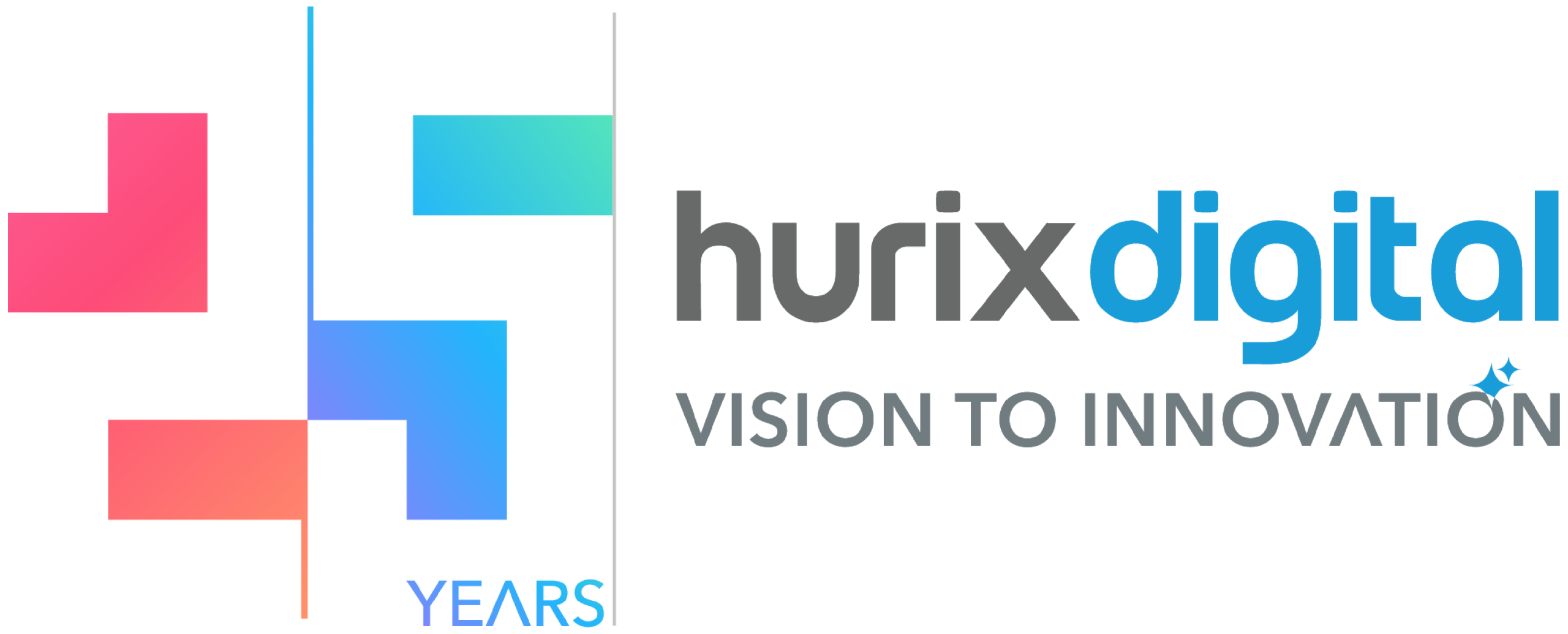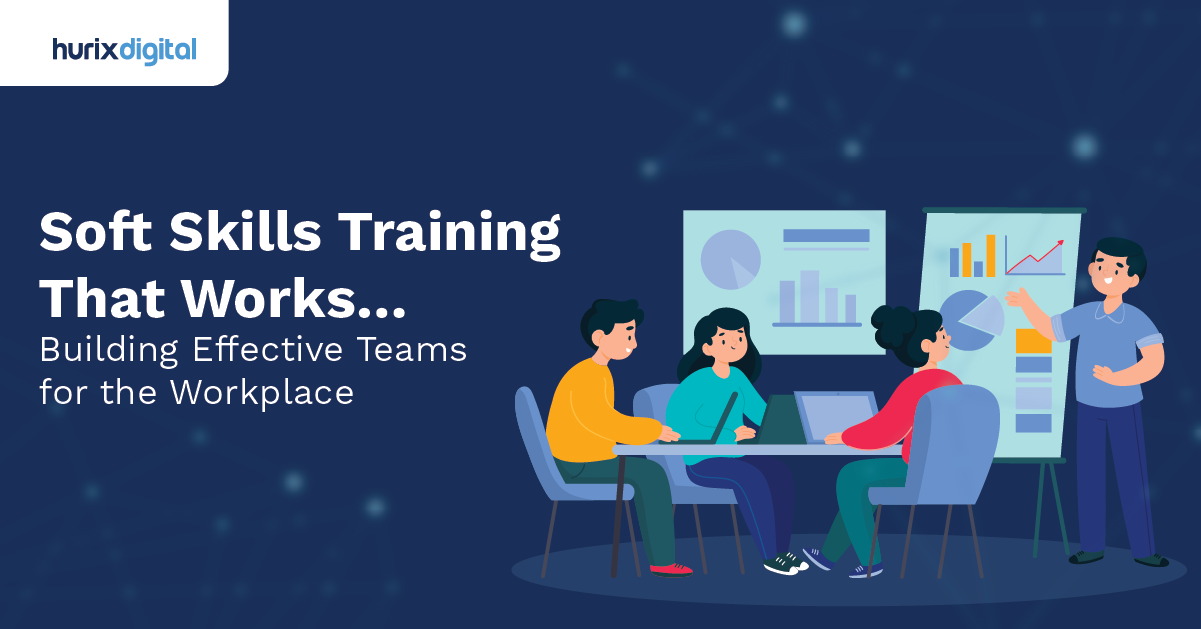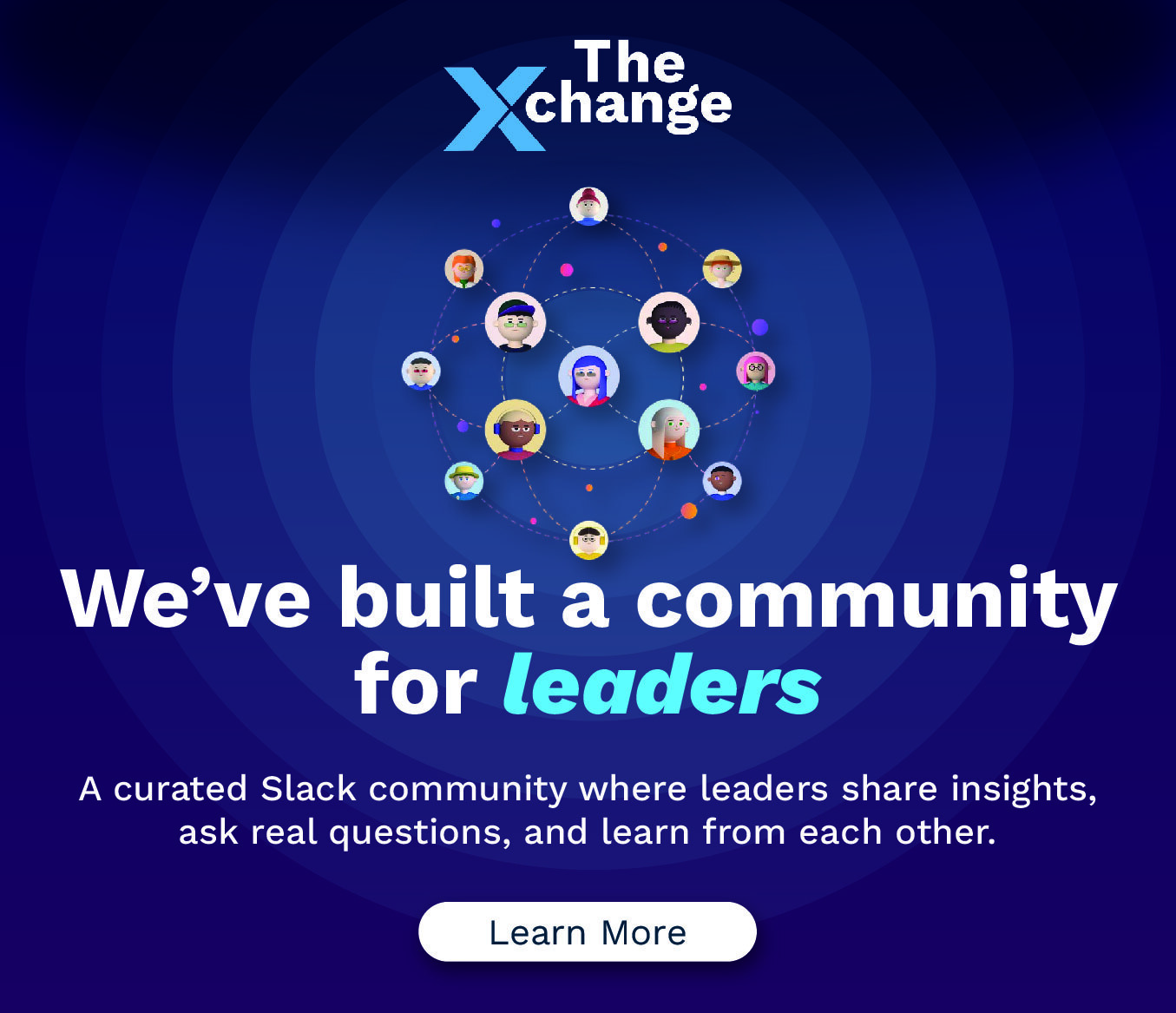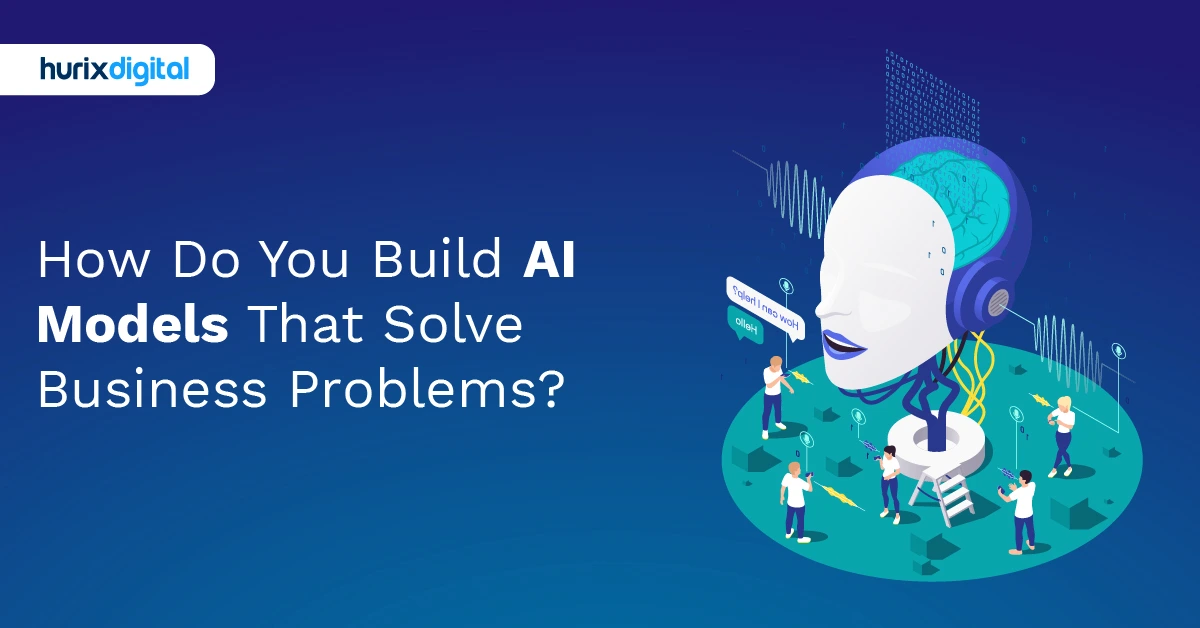
How Do You Build AI Models That Solve Business Problems?
Summarize with:
It feels like raising a child to build AI models. You provide them some data, you watch them learn, and every once in a while, you get those facepalm moments when they do something you didn’t expect in the wildest of dreams. Just as confidence reaches its peak, an external factor is introduced into the environment, whether algorithmic, regulatory, or cultural, that alters the environment and prompts the reconsideration of practices that had seemed established. Organizations everywhere face the same questions about AI training models. These go way beyond the glossy brochures to tackle the messy reality of implementation.
Mastering AI training requires a broader perspective. First, take a clear look at the talent you have and admit the gaps that keep projects from moving forward. Next, establish thoughtful guardrails that define how models are created and implemented. Be prepared to measure whether the significant investments are truly yielding a return. Assure that these highly capable systems remain secure and grow to ensure they will support the organization’s long-term objectives. Continue to adapt to changing needs, while remaining grounded in ethical principles. The road gets complex, and the most valuable learning often comes from cases that surprise you completely.
Table of Contents:
- How Does Data Quality Impact AI Model Training Effectiveness?
- What are the Hidden Costs of Scaling AI Model Training?
- How to Ensure Explainability and Mitigate Bias in AI Models?
- What Talent Gaps Hinder Effective AI Model Development and Training?
- How Do We Establish Robust Governance for AI Model Training?
- How to Measure ROI From Complex AI Model Training Initiatives?
- What Security Risks are Inherent in AI Model Training Processes?
- How to Align AI Model Training With Long-Term Business Strategy?
- How Can AI Training Models Adapt to Evolving Business Needs?
- What Ethical Frameworks Guide Responsible AI Model Training Deployment?
- Wrapping Up!
How Does Data Quality Impact AI Model Training Effectiveness?
Here’s something most people won’t tell you upfront: garbage data creates garbage models. Simple as that. But what makes data “garbage” isn’t always obvious.
Think about teaching someone to identify cats. If you show them only Persian cats, they’ll struggle when they encounter a tabby. That’s essentially what happens when training data lacks diversity. A financial services firm once trained its fraud detection model on two years of transaction data. Sounds reasonable, right? Except that those two years coincided with an economic boom. Their model flagged legitimate transactions left and right when the market shifted because it had never seen recession-era spending patterns.
Data quality goes beyond accuracy, though. Completeness matters too. Missing values create blind spots. Inconsistent formats confuse the learning process. And the real kicker is that the clean data ages like milk, not wine. Customer behaviors change. Market conditions shift. What worked six months ago might be worthless now. Smart organizations build data refresh cycles into their training pipelines.
Volume matters less than variety and veracity. A million perfect examples of one scenario won’t help when facing something new. It is better to have diverse, representative data that captures edge cases. Quality always beats quantity in model training.
What are the Hidden Costs of Scaling AI Model Training?
Everyone talks about computing costs. Few mention the human costs. Or the organizational headaches. Or the technical debt that accumulates faster than credit card interest. Let’s examine five hidden costs associated with scaling AI models for training.
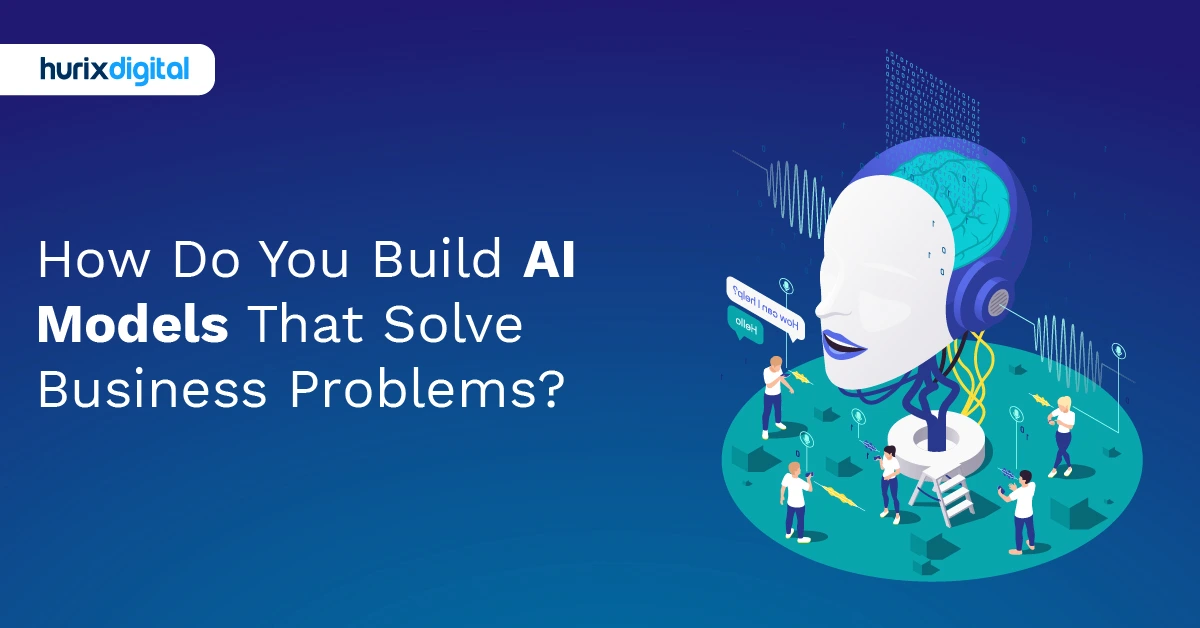
1. Computational Resources Cost
Start with the obvious: computational resources. Training large models burns through cloud credits like a teenager with a parent’s credit card. But that’s just the beginning. Storage costs multiply when you’re versioning datasets and model checkpoints. Network bandwidth fees add up when moving terabytes between systems.
2. People Cost
Then come the people costs. Data scientists don’t come cheap. And guess what? They’re not the only ones needed. You need engineers to build pipelines. Analysts to validate results. Domain experts are to ensure the model makes business sense. Project managers need to keep everyone aligned. Simply put, the headcount balloons quickly.
3. Infrastructure Cost
Infrastructure complexity grows exponentially, not linearly. Managing one model? Manageable. Managing fifty? You need orchestration tools, monitoring systems, version control, and deployment pipelines. Each component requires maintenance, updates, and troubleshooting. Technical debt compounds with every shortcut taken to meet deadlines.
4. Opportunity Cost
Hidden cost number four: opportunity cost. While your team spends months perfecting one model, competitors might deploy three decent ones and iterate based on real feedback. Perfectionism in AI training often costs more than early mistakes would have.
5. Compliance Cost
Don’t forget compliance and security overhead. Every model handling sensitive data needs audit trails, access controls, and encryption. GDPR, CCPA, and industry regulations all pile on layers of complexity and cost.
How to Ensure Explainability and Mitigate Bias in AI Models?
As with trust falls with strangers, black box models are risky and uncomfortable for everyone involved. Explainability is no longer just a nice-to-have feature; it is a must-have. Regulators demand it. Customers expect it. Your legal team requires it.
Bias creeps in through countless doors. Historical data reflects past prejudices. Sampling methods favor certain groups. Even seemingly neutral variables can encode discrimination. A hiring algorithm might never explicitly consider gender, but if it weighs factors correlated with gender, the bias remains.
Making models explainable starts with choosing the right architecture. Deep neural networks may offer superior accuracy, but it’s challenging to explain why they rejected someone’s loan application. Sometimes a slightly less accurate but interpretable model serves better. Rules-based systems, decision trees, and linear models might seem old-school, but they offer transparency.
Bias mitigation demands constant vigilance. Pre-processing techniques can balance datasets. In-processing methods add fairness constraints during training. Post-processing ensures that outputs are adjusted to provide equitable treatment. But here’s the catch: fairness itself has multiple definitions. Equal opportunity? Demographic parity? Individual fairness? Pick your poison, because you can’t optimize for all simultaneously.
What Talent Gaps Hinder Effective AI Model Development and Training?
Finding good AI talent feels like searching for unicorns. Except unicorns might be easier to find these days!
The apparent gap: experienced machine learning (ML) engineers and data scientists. However, focusing solely on technical roles overlooks the broader perspective. Domain expertise matters as much. A brilliant engineer who doesn’t understand insurance can’t build effective underwriting models. A data scientist unfamiliar with supply chains will struggle to optimize logistics algorithms.
Organisations often lack “translators,” individuals who can effectively communicate in both business and technical languages. In addition to identifying valuable use cases, these bridge-builders ensure models solve actual problems rather than theoretical ones. Without them, you get technically impressive models, but unsuccessful because nobody understands their value.
The dirty secret about AI talent: technical skills alone don’t cut it. Successful model development requires collaboration, communication, and project management. Many bright researchers struggle in corporate environments where stakeholder management is as essential as algorithmic excellence. Training internal talent often proves more effective than hiring externally. Your existing employees are familiar with the company culture, business processes, and the needs of your customers. Teaching them AI skills proves easier than teaching outsiders your business. Progressive organizations run internal boot camps, partner with universities, and establish apprenticeship programs. They build talent pipelines instead of fighting in the overcrowded recruiting pool.
Geographic constraints compound talent shortages. AI expertise clusters in specific cities, making remote work policies crucial. Working remotely presents its own set of challenges, including coordinating across time zones, maintaining team cohesion, and sharing knowledge effectively.
How Do We Establish Robust Governance for AI Model Training?
Governance sounds boring until something goes unbelievably wrong. Then suddenly everyone cares about documentation, approval processes, and accountability structures.
Effective governance starts with clear ownership. Who decides which models get built? Who approves training data? Who signs off on deployment? Ambiguity here leads to either paralysis or chaos. Documentation requirements may seem tedious, but they can cause pain that may arise later. Every decision in your project requires a clear and permanent explanation. From business justifications and data sources to design choices and test results, you have to document it all. If regulators, which they always do, knock on your door, you don’t want to be digging through old tickets and Slack threads trying to recall a decision from last quarter. That scramble burns time, raises red flags, and makes them doubt your process. Keep the answers in one folder, and you won’t lose the next audit.
Version control extends beyond code to data, models, and configurations. Which dataset version trained this model? What hyperparameters were used? What preprocessing steps were applied? Without proper versioning, reproducing results becomes impossible. Debugging production issues turns into archaeological expeditions through old emails and Slack messages.
People often overlook the importance of change management processes. As data distributions change, models need to be updated. But who says changes are okay? How do you ensure that updates don’t introduce new biases or break systems that depend on them? Smart companies treat updates to their models like software updates. They use staged rollouts, A/B testing, and rollback procedures. They continually monitor performance metrics to identify issues before customers do.
How to Measure ROI From Complex AI Model Training Initiatives?
ROI calculations for AI projects make weather forecasting look precise. Traditional metrics often fail to capture the whole picture.
Direct financial returns represent just the tip of the iceberg. Sure, you can calculate cost savings from automated processes or revenue gains from better predictions. But how do you quantify improved decision-making speed? Enhanced customer trust? Competitive advantages from being first to market? A logistics company’s routing algorithm slashed fuel costs. Easy numbers to track. However, it also improved driver satisfaction by avoiding traffic and reducing turnover. Try putting a monetary value on that.
Time horizons complicate measurements further. AI investments rarely pay off immediately. Models need training, testing, and refinement. Integration takes months. User adoption follows slowly. Baseline establishment often gets botched. Without knowing pre-AI performance, you can’t measure improvement. But historical data might not capture all relevant factors. Smart organizations run parallel systems initially, comparing AI predictions against traditional methods. Yes, it’s expensive. But it provides clear performance benchmarks.
Hidden costs undermine many ROI calculations. Model maintenance, retraining, monitoring—these ongoing expenses get conveniently forgotten in initial projections. Breakdowns in the data pipeline, integration issues, and regulatory changes all lead to reduced returns. Intangible benefits deserve consideration too. Employee satisfaction from eliminating mundane tasks. Organizational learning from AI initiatives. Innovation culture development. These soft benefits often exceed hard returns in the long term. Companies that factor only direct financial metrics miss AI’s transformative potential.
Portfolio approaches are more effective than project-specific calculations. Some models fail. Others exceed expectations. Viewing AI training as an R&D investment rather than guaranteed returns sets realistic expectations and encourages experimentation.
What Security Risks are Inherent in AI Model Training Processes?
Security in AI training resembles Swiss cheese. Full of holes that most people overlook until something goes terribly wrong.
Data poisoning attacks sound like science fiction but happen regularly. Malicious actors inject carefully crafted malicious data during training to facilitate backdoors or introduce biases into the model. Such models appear normal during testing but misbehave when a specific trigger is received. Furthermore, model extraction poses a threat to intellectual property (IP). Attackers query deployed models systematically, reverse-engineering the underlying algorithms to gain insight. Your million-dollar model becomes their free competitive advantage. Rate limiting helps, but isn’t foolproof. While stealing your work, sophisticated attackers use distributed queries to remain undetected.
When training is violated, there are legal nightmares to deal with. Models memorize training examples, potentially exposing sensitive information. Medical models might reveal patient data. Financial models could leak transaction details. The most problematic part is that many organizations discover privacy breaches only after deployment.
Supply chain vulnerabilities multiply risks. Open-source libraries, third-party datasets, and pre-trained models all pose potential security risks. That helpful GitHub repository might contain subtle backdoors. The purchased dataset could include poisoned examples. Even hardware accelerators have vulnerabilities. Trust requires verification at every level.
Insider threats can’t be ignored either. An employee with access to the training pipelines can cause significant harm if they are upset with their boss. They are aware of the weak points, possess legitimate credentials, and know how to cover their tracks. Robust access controls, audit logging, and separation of duties reduce but don’t eliminate these risks.
How to Align AI Model Training With Long-Term Business Strategy?
Most AI initiatives resemble shooting arrows in the dark. A lot of activity is happening, yet the strategic direction remains elusive. Alignment requires more than adding “AI” to your mission statement.
Strategic alignment begins with an honest assessment of capabilities. What can AI realistically achieve for your business? Where does it offer genuine advantages versus buzzword compliance? A regional bank doesn’t need cutting-edge language models. But predictive maintenance for their ATM network? That drives real value. Match ambitions to actual needs, not industry hype.
Time horizons matter enormously. Quarter-driven organizations struggle with AI’s long-term nature. Model development takes months. Returns materialize slowly. Cultural changes happen gradually. Companies succeeding with AI think in years, not quarters. They buffer AI investments from short-term profit pressures, treating them like R&D rather than immediate revenue generators.
Building versus buying decisions shape strategic directions. Training custom models offers competitive advantages but requires significant investment. Pre-trained models get you started quickly but lack differentiation. The sweet spot often involves fine-tuning existing models with proprietary data.
Platform thinking outperforms project thinking in terms of strategic alignment. Individual models solve specific problems. Platforms enable entire ecosystems. Compound returns can be achieved by investing in reusable components, such as data pipelines, training infrastructure, and deployment systems, thereby increasing the value of the investment over time. Each new model builds upon existing foundations rather than starting from scratch.
Strategic alignment also means knowing when NOT to use AI. Some problems have simpler solutions. Some processes work fine as-is. AI for AI’s sake wastes resources and credibility. The strategic question isn’t “How can we use AI here?” but “Should we?”
How Can AI Training Models Adapt to Evolving Business Needs?
Business needs change faster than fashion trends. Static models become obsolete before the victory celebrations end.
Adaptability starts with architecture choices. Modular designs allow component updates without complete rebuilds. Transfer learning enables quick pivots to new domains. Continuous learning pipelines beat batch retraining, but they’re trickier to implement. Models update incrementally as new data arrives, staying current automatically. But they risk catastrophic forgetting, where new patterns overwrite valuable old knowledge. A careful balance between stability and adaptability prevents models from becoming unstable.
Feedback loops accelerate adaptation if designed thoughtfully. User interactions provide training signals. Business metrics guide optimization directions. But negative feedback loops can spiral quickly. A content recommendation model might learn to show only clickbait, maximizing engagement while destroying user trust. Built-in guardrails and human oversight prevent optimization gone wrong.
Experimentation frameworks enable rapid iteration. A/B testing different model versions. Exploring new features. Trying novel architectures. Organizations that experiment systematically discover opportunities faster. They fail fast, learn quickly, and adapt continuously. And you know what the hardest part of adaptation is? Letting go of sunk costs. That model you spent months perfecting might need complete replacement. The approach that worked last year might be wrong today. Successful organizations treat models like temporary tools rather than permanent solutions. They measure performance constantly, pivot quickly, and never fall in love with their algorithms.
What Ethical Frameworks Guide Responsible AI Model Training Deployment?
When you really think about AI model training and deployment, it comes down to people. Rather than ivory tower ideals, this work is guided by practical experience.
Take transparency, for instance. It sounds simple enough: know how your AI works. But good heavens, trying to peer inside a complex deep learning model can feel like deciphering an alien language. You train a model on millions, even billions, of data points, and then someone asks, “Why did it make that particular decision?” The concept of non-linear transformations and high-dimensional spaces often leaves you scratching your head.
Finally, there’s fairness to be taken care of. We’ve all seen the headlines about AI models exhibiting biases inherited from their training data. Loan applications are being disproportionately rejected for specific demographics, or facial recognition struggles with darker skin tones. Most of the time, it isn’t malicious AI at work; it is somewhat historical human bias that the model is learning from and amplifying. We talk about ‘de-biasing,’ but the truth is, it’s like trying to remove a stain seeped into society’s very fabric. It requires careful data curation, rigorous testing across diverse groups, and thorough self-reflection from the developers.
So, it’s clear: tackling AI training effectively goes way beyond just the algorithms. It’s about making informed decisions about data, ensuring your systems are secure, and assembling the right team, all of which should align with your business objectives. If you follow this recipe exactly, your AI work will take off.
Wrapping Up!
AI training models require navigating countless complexities, from data quality puzzles to talent shortages, to security vulnerabilities, to ROI calculations that keep CFOs up at night. The organizations that succeed skip the pursuit of perfection and ignore flashy vendor promises. Instead, they build adaptive capabilities, invest in the right mix of people and technology, and keep realistic expectations about what AI delivers.
At Hurix Digital, we’ve guided organizations through every twist and turn of the AI training journey. Connect with our experts to discuss how we can accelerate your AI transformation while avoiding the costly pitfalls that derail so many promising initiatives.
Summarize with:

Vice President & SBU Head –
Delivery at Hurix Technology, based in Mumbai. With extensive experience leading delivery and technology teams, he excels at scaling operations, optimizing workflows, and ensuring top-tier service quality. Ravi drives cross-functional collaboration to deliver robust digital learning solutions and client satisfaction
 A Space for Thoughtful
A Space for Thoughtful 